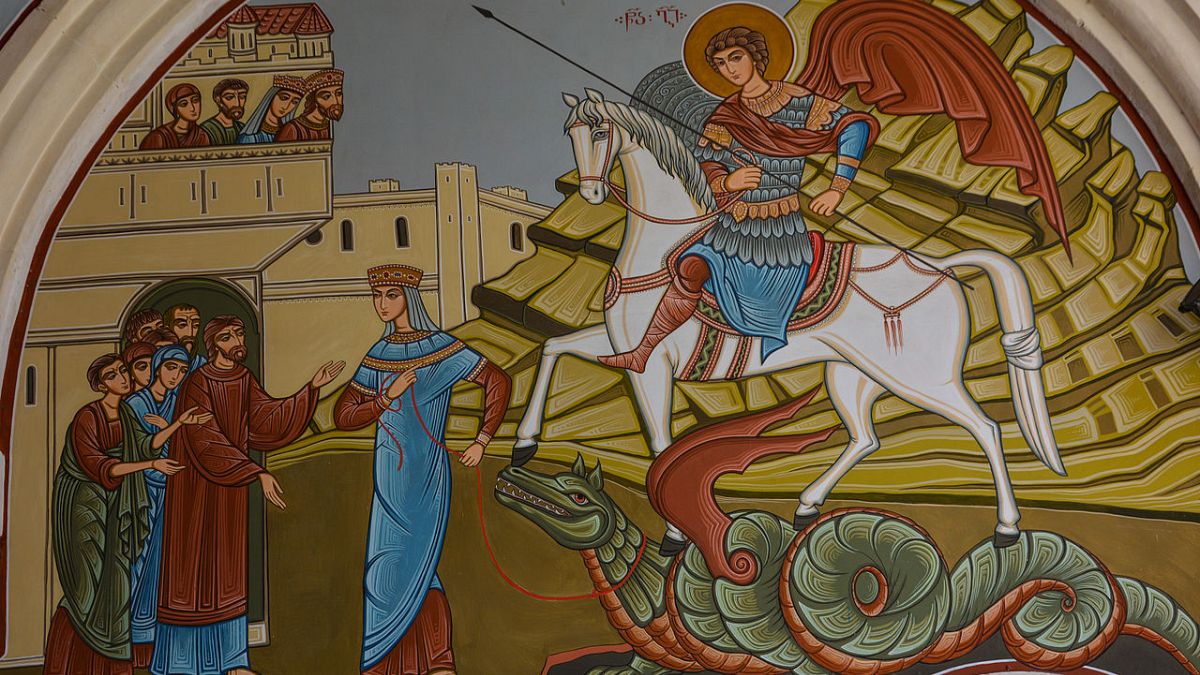Celebrations for St George's Day are low key in a normal year. They are inevitably even quieter during a coronavirus lockdown.
It’s Saint George’s Day! Google has produced the inevitable doodle, politicians are tweeting the inevitable tweets, and, amid the coronavirus lockdown, not much else is happening.
Here’s what it’s all about.
Who was St George?
St George was an early Christian martyr who died on April 23 in 303 AD.
Stories depict him as a Roman soldier who slew a dragon while rescuing a Libyan king's daughter. He was however tortured and ultimately killed in what was then known as Palestine during the Diocletianic Persecution — the most severe purge of Christians in the Roman Empire — when he refused to renounce his faith.
Legends about him started circulating in the 6th century and were likely boosted by returning knights during the Crusades. He is believed to have been recognised as England's patron saint by King Edward III in the 14th century - despite him never setting foot in the country.
But along with #StGeorgesDay trending online, you’ll also see the likes of #SanJordi, #SanJorge, and #SaoJorge.
This is because St George is also the patron saint of other nations and regions, such as in Portugal and Spain. Countries including Bulgaria, Cyprus, Georgia, Greece, Moldova, and Serbia also celebrate him.
How is it celebrated?
Gathering in celebration won’t be possible for obvious reasons this year, but even so, St George’s Day tends to be a subdued affair in England, especially in comparison to other patron saint days, such as Ireland’s St Patrick’s Day.
Revellers around the world toast Ireland's foremost patron saint by downing Guinness, donning green and watching parades. In both the Republic of Ireland and Northern Ireland, it is also a national holiday.
In contrast, St George's Day's celebrations, traditionally feasts, started waning in the 18th century. Nowadays, it is no longer a national holiday.
Still, authorities across England fly the national flag, called St George's Cross because it is inspired by the scarlet cross said to have been painted on St George's armour.
Some villages also put on fairs, where the English folk Morris dance is performed, while some churches ring out the 'Jerusalem' hymn and pubs put on a themed day. Events are obviously not taking place this year due to the pandemic.
There are traditional celebrations elsewhere as well, such as in Catalonia, where the celebration takes on something more akin to Valentine’s Day. Traditionally, men give women a red rose, while women give men a book in return.
What about Shakespeare?
St George's death also coincides with the birth and death of William Shakespeare, who is regarded as one of the greatest Britons to have ever lived.
Shakespeare's actual birthday is not known for certain, but he is recorded as having been baptised on April 26, 1564. At the time, baptisms were usually performed three days after birth.
If the date didn't tie them together enough, the playwright also mentioned St George in 'Henry V'. The Bard has the monarch rallying his troops ahead of the Battle of Agincourt during the Hundred Years' War by saying:
"I see you standing like greyhounds in the slip,
Straining upon the start. The game's afoot:
Follow your spirit, and upon this charge
Cry 'God for Harry, England, and Saint George!"


